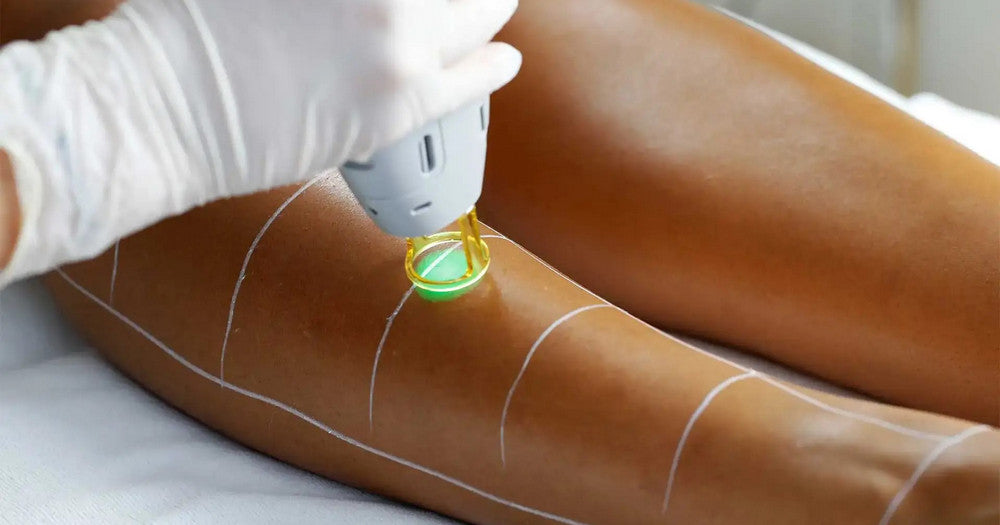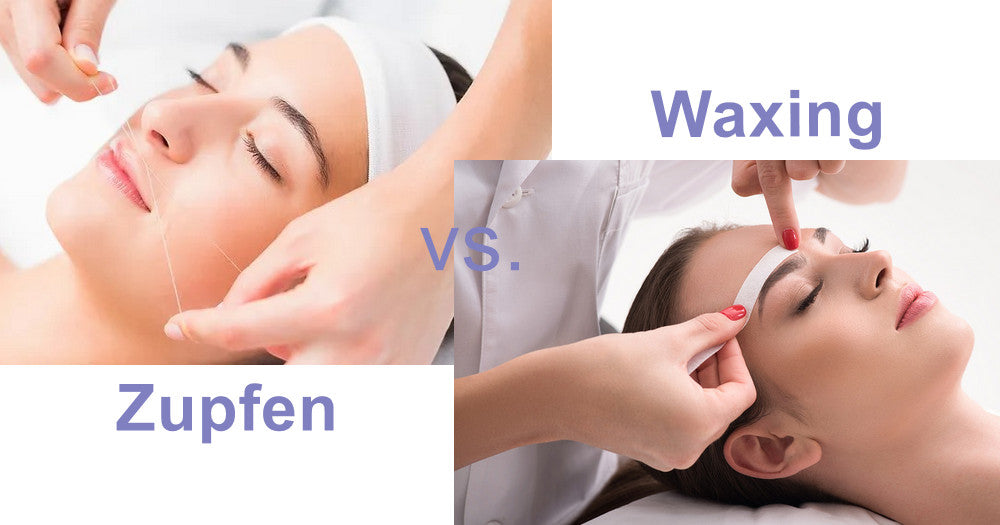While facial hair is natural, society views women as hairless, so when a woman grows hair on her face, it is considered taboo, causing women to lose confidence. Additionally, excess facial hair is sometimes seen as a sign of illness, which adds to the discomfort.
To achieve hairless skin that looks flawless, is easy to apply makeup to and absorbs skin care products better, people resort to various methods of temporary and permanent hair removal. These hair removal methods differ in terms of cost, effectiveness, results and pain. In this article, you will learn everything about facial hair removal.

- Part 1: Causes of excess facial hair
- Part 2: The 8 best methods for facial hair removal
- Part 3: The 5 Best Methods to Remove Facial Hair Naturally at Home
- Part 4: How to care for your skin before and after facial hair removal
- Part 5: Conclusion
Causes of Excess Facial Hair
Excess facial hair can have the following causes:
Hormonal imbalance
An excess of the male hormone testosterone or a lack of the female hormone estrogen that balances it causes the outbreak of unwanted facial hair. This hair grows in the pattern of male facial hair, with the hair most noticeable on the chin, upper lip and jawline.
Sometimes excessive hair growth also occurs between the eyebrows, on the eyes and in the nose. Diseases such as polycystic ovary syndrome , adrenal gland disorders and ectopic hormone production can lead to excessive facial hair growth.

genetics
In most cases, excessive hair growth is simply in your genes. This means that your mother or father has the genes for excessive facial hair and those genes were passed on to you. This excessive facial hair can occur with or without an underlying medical condition that is determined by the genes.
For example, some genetic disorders such as hirsutism and hypertrichosis run in families and can be the cause of unwanted excessive facial hair.
medications
Long-term use of some medications can, as a side effect, stimulate hair follicles to produce thicker, longer, and more facial hair.
Common medications that can cause hirsutism include steroids in the form of birth control pills, anabolic hormones, minoxidil, a medication used to treat baldness, and cyclosporine, a medication that suppresses the immune system, can cause excessive facial hair growth in both women and men.
Systemic diseases and skin diseases
Some systemic diseases that disrupt hormone production, such as POEMS and Cushing's syndrome, can trigger excessive hair growth.
In addition, some skin diseases such as acne, which makes hair more visible, porphyria cutanea tarda, in which the skin is more sensitive to the sun and produces hair as a defense mechanism, and dermatomyositis, an autoimmune disease of the skin, can be part of the etiology for excessive facial hair growth.

Physiological hormonal changes
If you notice excessive facial hair growth when entering puberty, at the end of adulthood, or just before the birth of your child, it is the physiological hormonal changes that lead to the undesirable facial appearance.
The type and amount of reproductive hormones produced during puberty, menopause and pregnancy change. These hormones determine secondary sexual characteristics such as facial hair.
The 8 Best Methods for Facial Hair Removal
Here are the 8 best facial hair removal methods you can try to safely remove excess facial hair:
-
IPL hair removal
IPL hair removal is one of the most popular methods to get rid of unwanted hair at home.
How it works
At the IPL hair removal uses a portable device that is powered by either mains electricity or a battery and emits broadband light with a wavelength of 500 nm to 1,200 nm. This light destroys the hair follicles after passing through the hair strands to the hair roots.
Advantages
- Significant reduction in hair growth
- Results that last for about 2 years
- Super-fast treatments
- Long-term cost-effective
- Relatively almost painless
- Can be done at home
side effects
- slight stinging
- skin redness and swelling
-
waxing
Waxing is the use of a sticky substance, which can be soft or hard, to adhere to the hair.
How it works
Waxing material that is pulled from the surface of the face removes the hair from the roots. A homemade waxing in the form of sugaring can be prepared. It is gentle on the sensitive facial skin.
Waxing strips can be used for quick and effortless waxing.
Advantages
- Is effective for 3 to 6 weeks
- peeling for the skin
- The hair grows back and becomes thinner and weaker over time
side effects
- Painful
- It can lead to ingrown hairs and hair follicle infections
- Can cause micro-cracks in the skin
-
pulling threads
As the name suggests, threading involves removing unwanted facial hair with a thread.
How it works
Threading is most commonly used on the upper lip and eyebrows. A twisted thread grabs the hair close to the surface of the skin and pulls it out from the roots as it moves.

It removes multiple strands of hair at once, ensuring quick hair removal and no hair left behind.
Advantages
- Skin-friendly for facial skin
- The results last a month or more
- Thread pulling is absolutely free
- Can grip any length of hair strand
side effects
- Painful and unpleasant
- Not safe for sensitive skin
- Can also affect the skin in addition to hair
-
Shave
Shaving is a hair removal technique similar to dermaplaning that can be done at home without the need for a beautician.
How it works
A special razor for the face is used, which pulls the skin taut and trims the hair from the surface of the skin with small movements of the razor.
Advantages
- Super-fast hair removal takes just a minute or two for the entire face.
- Almost painless
- Can also be used to remove dead skin cells and impurities
- Extremely affordable
side effects
- May cause skin redness, bumps, ingrown hairs, razor burn, infections and cuts
- Dull hair grows back within a few days
-
Pluck
Plucking is one of the most commonly used methods for removing unwanted facial hair.

How it works
When plucking, individual strands of hair are pulled out of the skin by hand using tweezers. Tweezers are a tool made of metal.
Plucking is the removal of unwanted hair from the face with tweezers.
Advantages
- Results last for about a month
- Perfect for chin hair and stray eyebrow hairs
- hair removal with precision
- Easy to maintain
side effects
- May cause pain or discomfort
- Time-consuming
- May cause bumps on the skin
-
depilatory creams
Although they are usually used for the body, there are also Depilatory creams for excess facial hair.
How it works
They contain proteolytic chemicals that remove unwanted hair by breaking the protein bonds in the hair strands at a specific location. The effects of depilatory creams last longer than those of razors and shorter than those of waxing.
Advantages
- Does not cause pain or discomfort
- Takes 3 to 5 minutes for facial hair removal
- Some creams also contain skin-soothing ingredients
side effects
- Persistent chemical smell
- May cause skin irritation, allergies and chemical reactions
-
laser hair removal
The Laser hair removal was women's dream hair removal method until the introduction of IPL hair removal.

How it works
Laser hair removal is a professional procedure in which the specialist uses a Nd:Yag laser diode that emits monochromatic light beams. These beams, just like IPL, reach the hair follicles and burn them.
However, this beam is more intense and, compared to IPL, only treats one section of hair at a time and can only be performed in a laser clinic or salon.
Advantages
- Hairlessness that lasts a year or more
- Precise hair removal with intact skin
- Non-invasive procedure
- Safe for the skin
side effects
- Painful with varying intensity
- skin redness, swelling and sensitivity to light
- laser burns, blisters and scarring
-
electrolysis
Electrolysis literally means the removal of unwanted hair with the help of electricity.
How it works
The current is passed through the hair using a thin, thread-like wire. This current burns the hair follicles so that they can never regenerate.
Each electrolysis session can take a while because individual strands of hair are treated at a time. It is also expensive.
Advantages
- The only FA-certified method for permanent hairlessness
- Can be used on any hair color and skin type
- Suitable for small areas such as the face
side effects
- skin discoloration
- infection of the hair follicles
- scarring of the skin
The 5 Best Methods to Remove Facial Hair Naturally at Home
-
alum and rose water
Although alum is commonly used for its astringent properties, it also works as a hair removal agent. To remove hair with alum, take 1 tablespoon of fine-grained alum powder and add 2 tablespoons of rose water to make a well-mixed solution.

Then apply this solution to the area of the face you want to treat and wait for it to dry. Once it has dried, repeat the application 2 to 3 times and gently rub it off the face. This will remove unwanted hair and reduce its growth.
-
corn starch and protein
Cornstarch and egg whites make a peel-off mask that helps you remove unwanted hair from the root by pulling it out of the skin. To make this mask, take 1 egg white and mix 1 tablespoon of sugar and 1 tablespoon of cornstarch into it. Mix this content thoroughly and apply it all over the face.
Once this mask has dried, carefully remove it against the direction of hair growth.
-
sugar, honey and lemon
Take about 2 tablespoons of sugar and add 1 tablespoon of honey and 1 tablespoon of lemon. Then heat it on a low flame until it becomes a thick mixture. This mixture can be used to remove unwanted facial hair in the same way as waxing. However, it does not require strips and is relatively painless.

-
chickpea flour, turmeric and rose water
Chickpea flour can exfoliate the skin and also create friction to eliminate the facial hair. Turmeric makes the hair softer and less likely to grow back and rose water ensures that the skin does not get irritated by the constant rubbing. So these three can create a magic potion to remove unwanted facial hair.
Mix these ingredients in a 2:1:2 ratio to make a paste. Then apply it all over your skin. When it's dry, moisturize it again by spraying rose water. When it's moist, rub the mask off with gentle pressure from your fingertips in circular motions.
If you try this paste twice a week for a few months, it can help you successfully remove unwanted hair.
-
gelatin and milk
Unflavored gelatin and milk can help you eliminate even the thickest unwanted facial hair with their strong adhesive properties. You can use equal amounts of gelatin and milk and heat them to form a well-mixed facial scrub paste.
Then apply it to your skin so that the unwanted hair is covered with a thin layer of this mask in the direction of hair growth. Wait 20 to 30 minutes for the mask to dry and then remove it from bottom to top so that the mask moves in the opposite direction of hair growth.

How to care for your skin before and after facial hair removal
Before hair removal
A few tips and tricks can help reduce the potential side effects of facial hair removal methods, so you can follow the suggestions below to take good care of your skin.
- Remove dead cells and impurities with a weekly peeling
- Always wash your face with a cleanser and dry it before using any hair removal method.
- If you wear makeup or other skin care products, be sure to remove them thoroughly.
- Choose the facial hair removal method that best suits your skin type
- Do a patch test every time you try a new method
After hair removal
The following measures can help you deal with the aftereffects of facial hair removal.
- Wash your face with water to soothe the skin
- Use ice on the face to soothe redness
- Apply a good moisturizing cream or lotion to your face
- Stay indoors and wear sunscreen when you go outside
Conclusion
Facial hair removal can be divided into different types depending on where it is performed, e.g. in a salon or at home, depending on what results are achieved, e.g. temporary or permanent, and depending on whether it is natural or instrumental methods.
The best methods for facial hair removal are IPL, which is convenient and long-lasting; laser, which is semi-long-lasting and precise; electrolysis, which is practically long-lasting; waxing, which slowly reduces hair regrowth; threading, which is inexpensive; shaving, which is super fast, and hair removal creams, which are a quick solution.
Which of these methods you choose depends entirely on your personal requirements and expectations for facial hair removal.





























